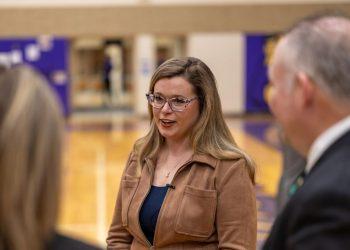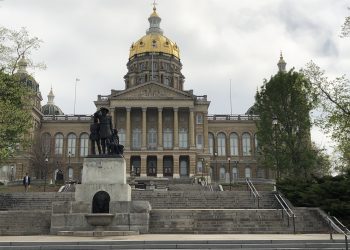(The Center Square) – Roland-Story Community School District’s school board approved the spending of $100,000 of federal Elementary and Secondary School Emergency Relief III funds on physical education equipment and new flooring in their high school’s weight room.
“This use of funding is well within the guidelines established by the federal government, and our application for this specific expenditure was approved by the Iowa Department of Education in late July,” Superintendent Matt Patton told The Center Square in an emailed statement on October 8. “However, it is important to note that the weight room expenditure was only a small portion of the $1,126,651 in total COVID-19 relief funds available to our district.”
He said the district, that includes the cities of Roland and Story City, plan to make the following additional expenditures:
- PPE Supplies, including disposable masks, hand sanitizer, foggers, disinfecting supplies, thermometers and band instrument covers: $71,365
- Hiring of 1.5 additional special education teachers for three years: $310,000
- Full-time contract with Youth & Shelter Services for a mental health therapist for two years: $116,000
- Hiring of an additional full-time school nurse for two years: $134,760
- Expansion of summer school for K-12 students for three years: $75,000
- Purchase of 25 hotspots with monthly data plans for students learning remotely: $8,554
- Purchase of expanded choral risers for vocal music (with ESSER III funds): $15,784
- Covering expenses related to employee leaves of absence due to COVID: $28,988
Patton said the school had access to $1,126,651 in total COVID-19 relief funds, and it has about $275,000 remaining from federal funds.
“Due to the specified purpose and defined timelines, it’s possible that we won’t be able to utilize all of the remaining funds,” he said.
Iowa Department of Education Communications Director Heather Doe confirmed for The Center Square in an emailed statement on October 11 the department approved the requests.
“However, the Iowa Department of Education’s role in reviewing district expenditures for reimbursement through ESSER III is to ensure that the uses, as indicated by the district, are allowable uses as outlined in federal law,” Doe said. “Whether or not this is the best use of these funds is a local decision. If the district determines this is a reasonable use of these funds, the Department has no authority to deny such use unless the expenditure is definitely unallowable.”
Under the Code of Federal Regulations (CFR) §200.439, capital expenditures for “general purpose equipment, buildings, and land” and $5,000 or more for “special purpose equipment” are permitted if school districts receive prior written approval from the state.
Doe said the school district’s request fell under the categories of “Developing strategies and implementing public health protocols including, to the greatest extent practicable, policies in line with guidance from the Centers for Disease Control and Prevention for the reopening and operation of school facilities to effectively maintain the health and safety of students, educators, and other staff” and “Other activities that are necessary to maintain the operation of and continuity of services in local educational agencies and continuing to employ existing staff of the local educational agency.”
Iowa Senate Majority Leader Jack Whitver, R-Ankeny, said in an interview on October 8 with Iowa Press that “spending federal stimulus dollars or pandemic money on sports … doesn’t seem to be an appropriate use.”
School districts must use funding from ESSER I (through Coronavirus Aid, Relief, and Economic Security Act) by September 2022, ESSER II (through Coronavirus Response and Relief Supplemental Appropriations Act) by September 2023, and ESSER III (American Rescue Plan) by September 2024.
Districts can file for reimbursement of expenses dating back to March 13, 2020. Any remaining funds will be returned to the U.S. Department of Education, Doe said.
Iowa is required to allocate at least 90 percent of grant funds as subgrants to districts in proportion to each school district’s Title I, Part A 2020-2021 school year funding share, which is based on the percentage of low-income students the district serves. School districts determine how and when to use their allocations. Their spending must meet ESSER III requirements.
Doe said the details on districts’ use of funds will become available when the department submits its annual report to the U.S. Department of Education.
“We do not know a date yet for submission of the report, but anticipate a due date in early 2022,” she said.
















